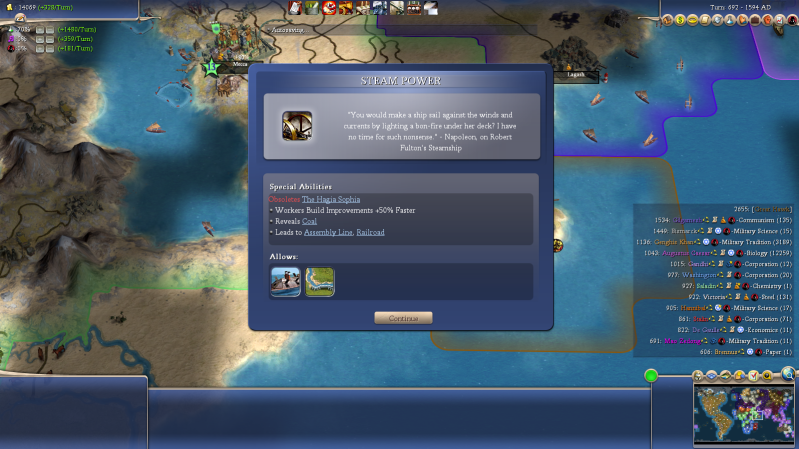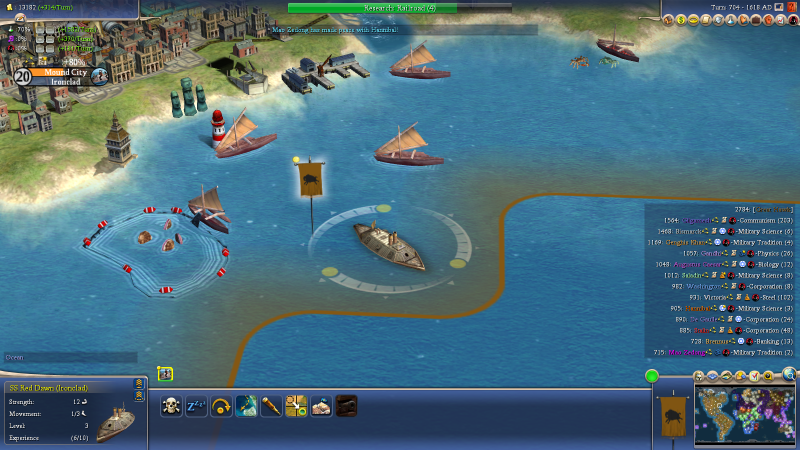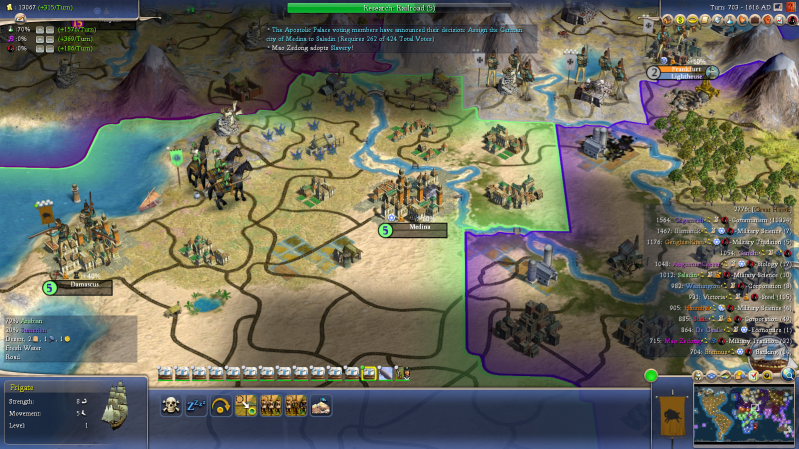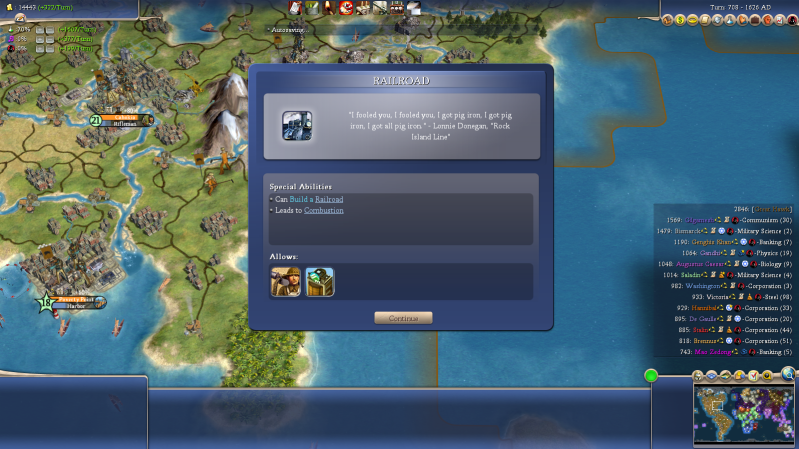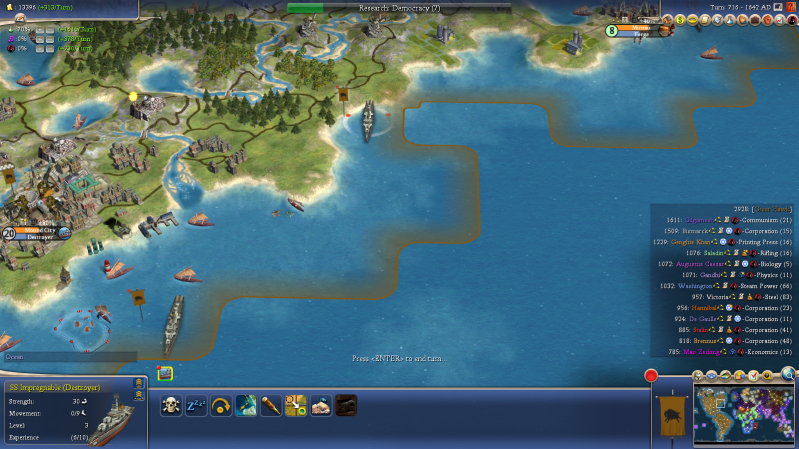Sorry for the rapid-fire updates. I'm trying to finish this story up rather quickly.
-----------------------------------------------------------------------------------

By the end of the 1540s, reinforcements arrived en masse near Frankfurt, including a small Celtic army. Half of the German force marched into Sumeria and battered itself against Uruk's formidable defenses, before deigning to simply wander the countryside around the city, tearing apart roads and burning villages. The other half of the German force marched with the Celts to the old city of Eridu, where they stood a significantly better chance.

Also of note is that in 1450, Carthage's pact with Germany expired, leaving Carthage without a master but still at war with Sumeria. It was unclear what role Carthage would play in the war, much less in world affairs.

Though menaced by Sumerian raiding parties, the Celtic army performed bravely outside of Eridu, waiting patiently as the German siege machinery laid into the thick walls of the city. Sadly, they were to play little part in the ultimate attack of the city, as their forces were dwindled to almost nothing by Sumerian raiders. They were forced to retreat back over the border, leaving the Germans to take the bulk of the job. However, the oppurtune arrival of a great general inside the city steeled its defenders, spelling bad news for the city's attackers. Meanwhile, in the Sino-Mongol War, the Chinese city of Scythian was devastated by the seemingly unstoppable Mongol army. China capitulated to Mongolia, elevating the Mongols to the status of a major power.
Though the war was still dragging on, the second German campaign into Sumeria had ended in a spectacular failure, with the bodies of Germans and Celts scattered in the sand between Frankfurt and Eridu. Though inconclusive, this campaign was both interesting and informative to the Mississippian correspondents who observed it. It seemed that Sumeria was not a nation to be trifled with. Perhaps this would bring it into conflict with Mississippia sooner or later.

It was Sumeria's turn for an embarassing defeat in the desert. This time, in Africa. Mississippian reports noticed Sumerian units moving through Damascus (returned to Arabia by the treacherous Afrikans!) into North Africa, where they began to lay siege to the Carthaginian city of Utica with an army primarily made up of cuirassiers, war elephants, and catapults. Where the cuirassiers had been wildly effective against the knights of the Germans, they were no match for the rifle-bearing cavalry of Carthage. In reality, the technology for rifling had been sold to the Germans by the Mississippians, and then, apparently, given to Carthage as well. The spectacular failure of a major power to inflict a defeat upon so minor a country as Carthage made Sumeria the butt of political cartoons worldwide.

In 1566, an armistice was signed between Germany and Sumeria, ending three decades of pointless conflict. The war with Carthage continued, however.
-----------------------------------------------------------------------------------
Revolution and Modernization: The Troubled 16th Century (Pt. 2)
Poverty Point in 1550.

"The Mississippian People's Republic condemns the German Empire's unwarranted attack on Sumeria." - The Mississippian premier, shortly before increasing arms shipments to Germany.
In 1538, the German Empire and its vassals renewed hostilities with the Empire of Sumeria. German forces poured out from Frankfurt, only to be rebuffed before even making it to any Sumer cities. The initial offensive was sent fleeing back over the border into Germany by the Sumerians' more advanced cuirassiers, and the city of Uruk was reclaimed by a Sumerian attack force. These initial losses embarassed the Germans, but the assault would be renewed before long.Poverty Point in 1550.

"The Mississippian People's Republic condemns the German Empire's unwarranted attack on Sumeria." - The Mississippian premier, shortly before increasing arms shipments to Germany.



When the assault was finally launched upon Eridu, entire fields outside the city were littered with Sumerian and German dead. Vivid photographs of this event sent back home by Mississippian war observers, both horrifying and amazing citizens throughout the nation, who had not known war for a generation. Though this siege could be considered a failure, the Sumerian general was slain during the battle, dampening the resolve of the city's defenders. It would perhaps be more accurate to call the first siege of Eridu a draw.Though the war was still dragging on, the second German campaign into Sumeria had ended in a spectacular failure, with the bodies of Germans and Celts scattered in the sand between Frankfurt and Eridu. Though inconclusive, this campaign was both interesting and informative to the Mississippian correspondents who observed it. It seemed that Sumeria was not a nation to be trifled with. Perhaps this would bring it into conflict with Mississippia sooner or later.


Last edited:


